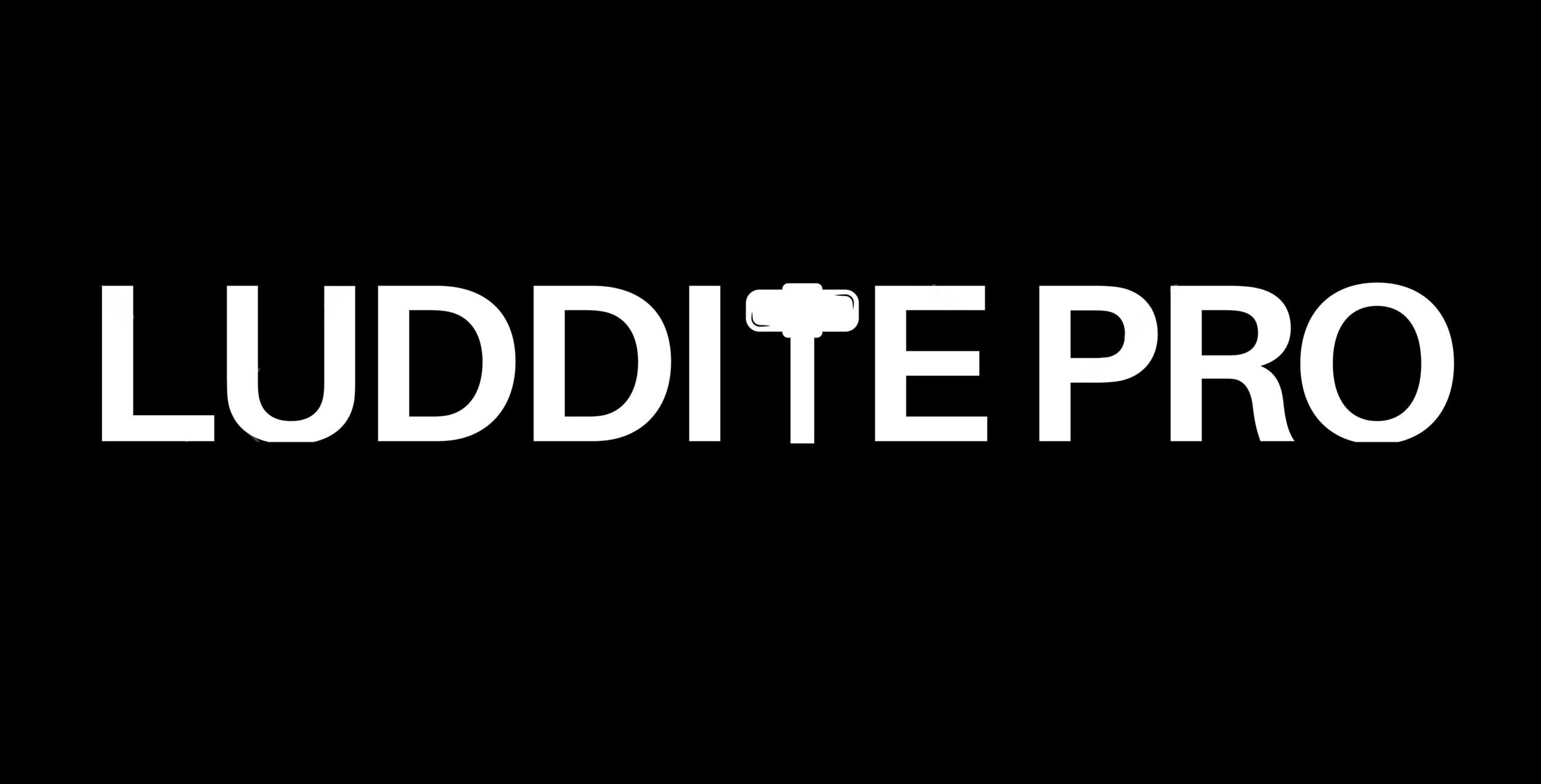Why You Should Care More About Crochet and AI
When you think of creative markets that AI image generators like Midjourney and Stable Diffusion are disrupting, you likely think of artists working in flashy industries like video games, animation, comics, or even photographers taking the cover photos for major publications, movie posters, and merch.
Crochet is probably the last thing that comes to mind, as it’s not a modern art that seems like AI could ever replace. It only takes a skein of yarn and a crochet hook, so there’s little use for text and images. But knitted and crocheted textiles are centuries-old crafts illustrating how generative AI impacts every other industry.
At the end of the supply chain, we know that digital outputs from generative AI will not replace our knitted blankets, sweaters, and scarves. Unlike animation, games, or even comics, crochet does not involve any drawing that ends up on a flat, digital screen. Instead, artisans and manufacturing equipment physically weave yarn into fabric that exists in the physical world.
It’s an intricate and delicate process that takes a lot of time and skill, just like learning to draw. And just like digital art, AI is neither replacing crochet artisans nor making their lives any easier. The AI bro mottos of “get gud” and “adapt or die” are not applicable to crochet, because–and I cannot repeat this enough–a .png-making machine will never replace a physical sweater, no matter how much they develop it.
And this is the hell that every artist in every medium and industry is facing in the modern AI creator economy.

Learning to Crochet
Although it sounds like your aunt’s hobby, crochet is a big business, with around $43 billion in knitted or crocheted fabrics being exported around the world in 2023. In all transparency, I have been learning how to crochet, but I don’t know the difference between knitted and crocheted textiles. So I’ll use the terms interchangeably here since the same basic problems apply.
Feel free to correct me in the comments.
Knitted styles have trended in fashions, and high-profile tech industry figures often wear cashmere sweaters on social media, like Steve Jobs infamously wearing a cashmere turtleneck.
Black turtlenecks from Jobs clones aside, you’ll also find knits on Instagram head Adam Mosseri, Microsoft head Satya Nadella, and Twitter founder Jack Dorsey, and these cashmere knits can cost upwards of $1000.

Of course, knitted and crochet items have a wide price range, and there are a lot of factors involved. A high-priced item like Mosseri is wearing is likely made with a single strand of yarn and could therefore be unraveled. Determining between cut and uncut garments in thrift stores is an easy way to harvest cheaper yarn. The price of producing yarn also increased 40% in the years following the pandemic and since dropped to about 20% higher than pre-pandemic pricing, according to the St. Louis Fed.
And the pandemic price hikes on materials is just the start of problems aspiring crochet artisans face.
Breaking the Patterns
In order to learn how to crochet a specific item, artisans often scour the internet for patterns like this:
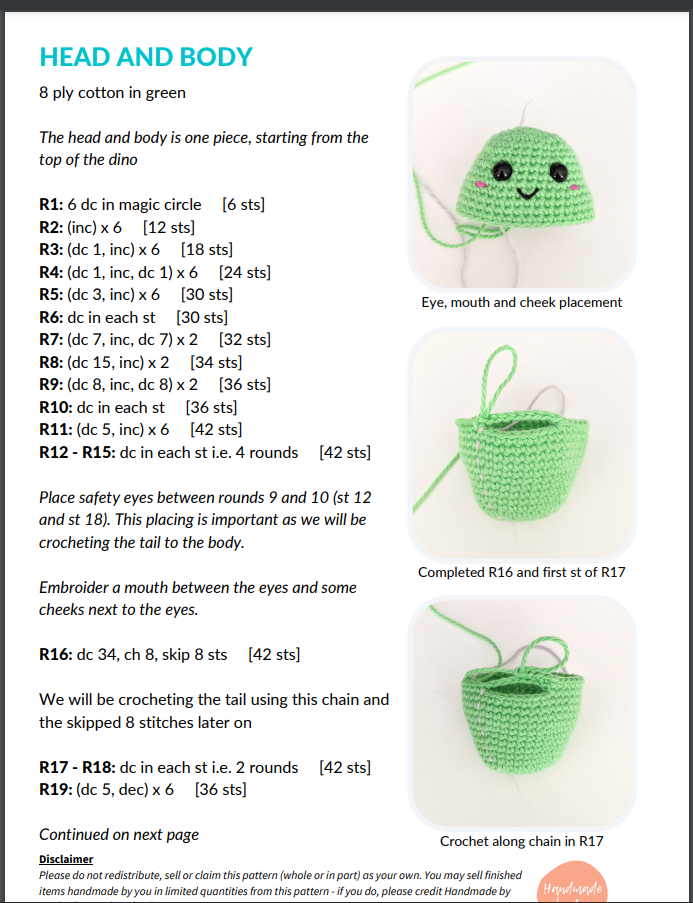
These patterns can range in price anywhere from free to $10 or more. This means your cost of a pattern could be as much or more than the cost of yarn and hooks needed to make the pattern.
As you can see, there’s a mixture of both text and images in these patterns that are easily found online, so it’s safe to assume that they’ve been scraped for use in both image and text generators.
And we can test that assumption–both Wired and CNN did stories last year featuring experienced crochet artists following ChatGPT-generated patterns to show what they really create. Like anything else, it doesn’t understand how actual crochet works, so following the patterns leads to hilariously out-of-proportion results. So clearly these text generators have trained on patterns, and image generators have too (see below). However, you wouldn’t be able to actually create high-quality crocheted goods using either the AI-generated text nor images as reference.
That’s not all–they’re also often being advertised with AI-generated images like these ones uploaded to Threads this week.
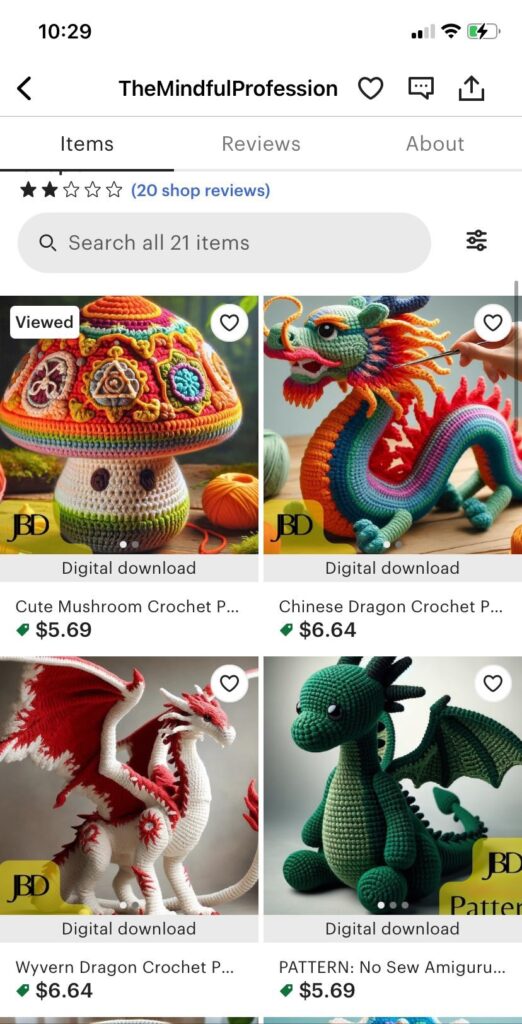
This means when searching pattern marketplaces, crochet crafters now have to wade through a bunch of AI-generated patterns that don’t work and are being advertised with AI-generated images that often wouldn’t be possible even if the pattern did work.
AI polluted the marketplaces to get the raw supplies necessary to learn and perform their craft. Although neither LLMs nor image generators learn like humans do, the example AI bros always present is of reference images. But in the case of physical crafts like crochet, it’s more than just a reference–it’s the full recipe to follow in order to recreate the art.
But AI is creating a two-fold problem since it hurts both the recipes/patterns and the rest of the crochet business, which is like any other content creator or influencer.
Crowding the Market
If you’ve logged into Facebook, Instagram, or Pinterest lately, you’ve likely seen one of the now-prolific AI bot accounts that continuously posts a stream of unlikely AI images with engagement baiting captions.
Check out 404 Media’s exploration of the topic here, which focuses on a chainsaw artist being copied. He’s not alone–AI crochet is an entire genre of engagement-baiting bots on social media, and they present creations that the average person who doesn’t crochet may not immediately realize is not realistic.



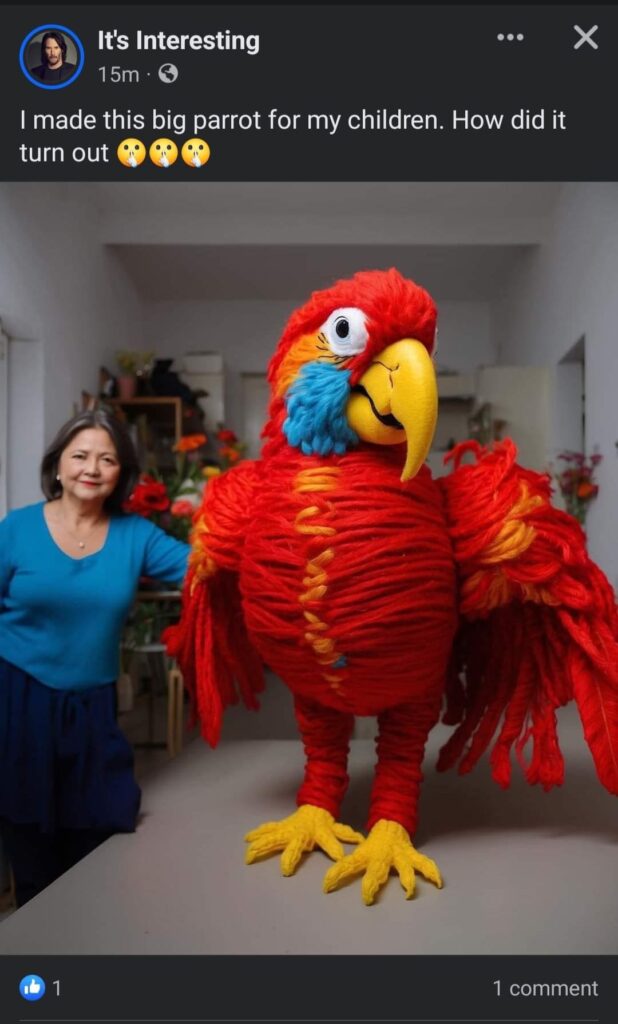


This leaves crochet entrepreneurs and influencers with several problems.
First, they’re now competing with these AI bots in the general public. While their end product of a physical crocheted product can’t be replaced by AI, the digital marketing side of it can be flooded with AI-generated facades that are mimicking everything except the actual art.
Not only that, but if you happen to succeed and stand out in crochet, you’re likely to have your viral images stolen and fed into AI image generators again via image-to-image or a Lora model training that steals from you a second time, assuming your work was already used to train these existing LLMs and image generators. This double-theft is more likely to happen to you the more successful you are, so in scaling your business, your risk exposure caused by AI grows exponentially.
And there’s another problem–many potential customers will often hire you to replicate something they saw online. And if they actually like one of the images above, they may commission you to recreate it, which will be impossible since these AI-generated images don’t actually understand crochet.
Apps like Midjourney or Dalle may know how to make a crochet-like texture that gives the impression of being made from looping yarn, but it’s unlikely to be a single strand that you can recreate in the real world because the image doesn’t follow the laws of physics and certainly wouldn’t end up as high quality as Mosseri’s sweaters.
The best you could do is search pattern marketplaces for something similar that can be adapted to get as close as possible. This would be a time-consuming task even if those marketplaces weren’t flooded with AI-generated patterns that don’t work.
This places crochet artists in between a rock and a hard place, as AI increased the difficulty on every end of their business, despite the indisputable fact that no matter how much it’s developed, .png and .txt generators will never create a sweater, scarf, or hat to keep your body warm from the cold weather.
Instead, what AI is actually doing is making crochet more difficult to learn and expand. People working in that industry will never receive a benefit–it can’t help them create nor summarize patterns. It can’t help them market their crafts. AI causes only problems in the crochet industry while offering no solutions to any step of the workflow and supply chain.
And the truth is this is more broadly true across every other artistic niche, including those digital niches mentioned above. Although generative AI can make images and text, the end result is not replacing artists. The end result is tangibly making their work more difficult, time consuming, and expensive to produce and distribute while eroding trust at every step of the process for both the crochet artists and their customers.
Related Posts
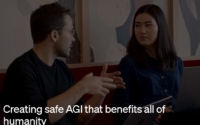
How OpenAI Became a Tech Industry Supervillain

News AI: Outlets Continue Relying on Generative AI
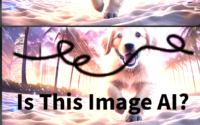
Testing Adobe Content Credentials with Every Photoshop Feature
About The Author
Chief Luddite
Luddite in Chief at Luddite Pro - Keeping up with technology so you don't have to.
